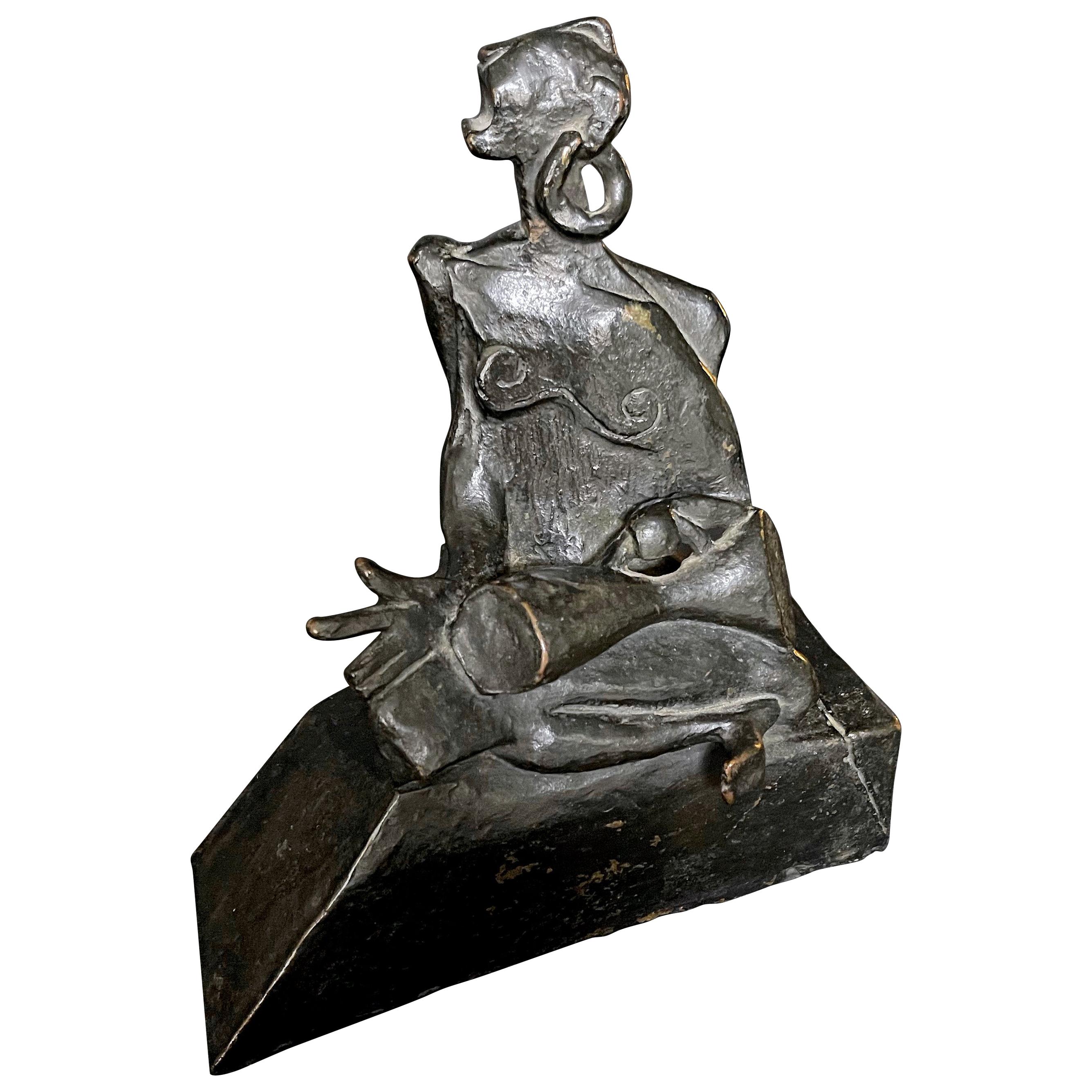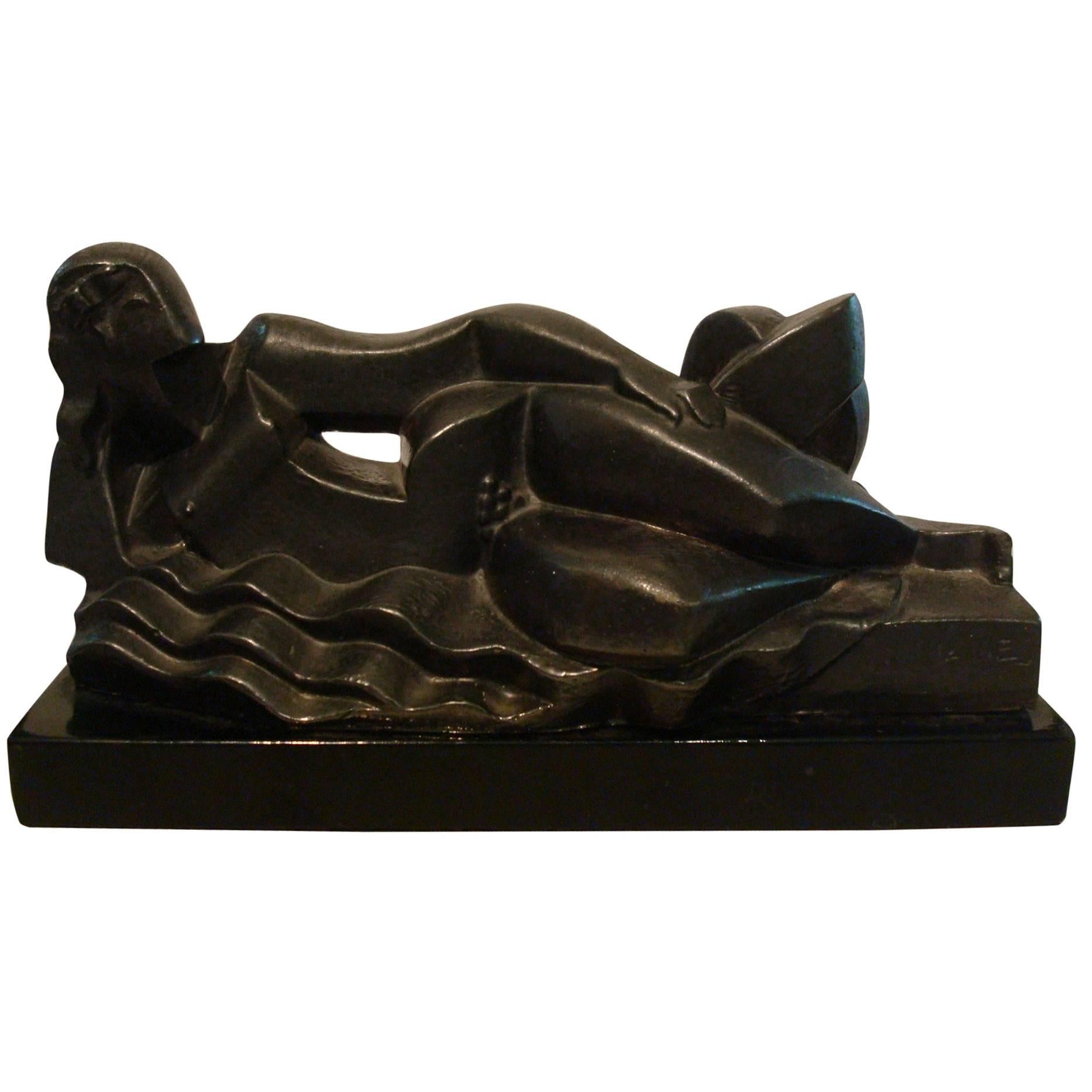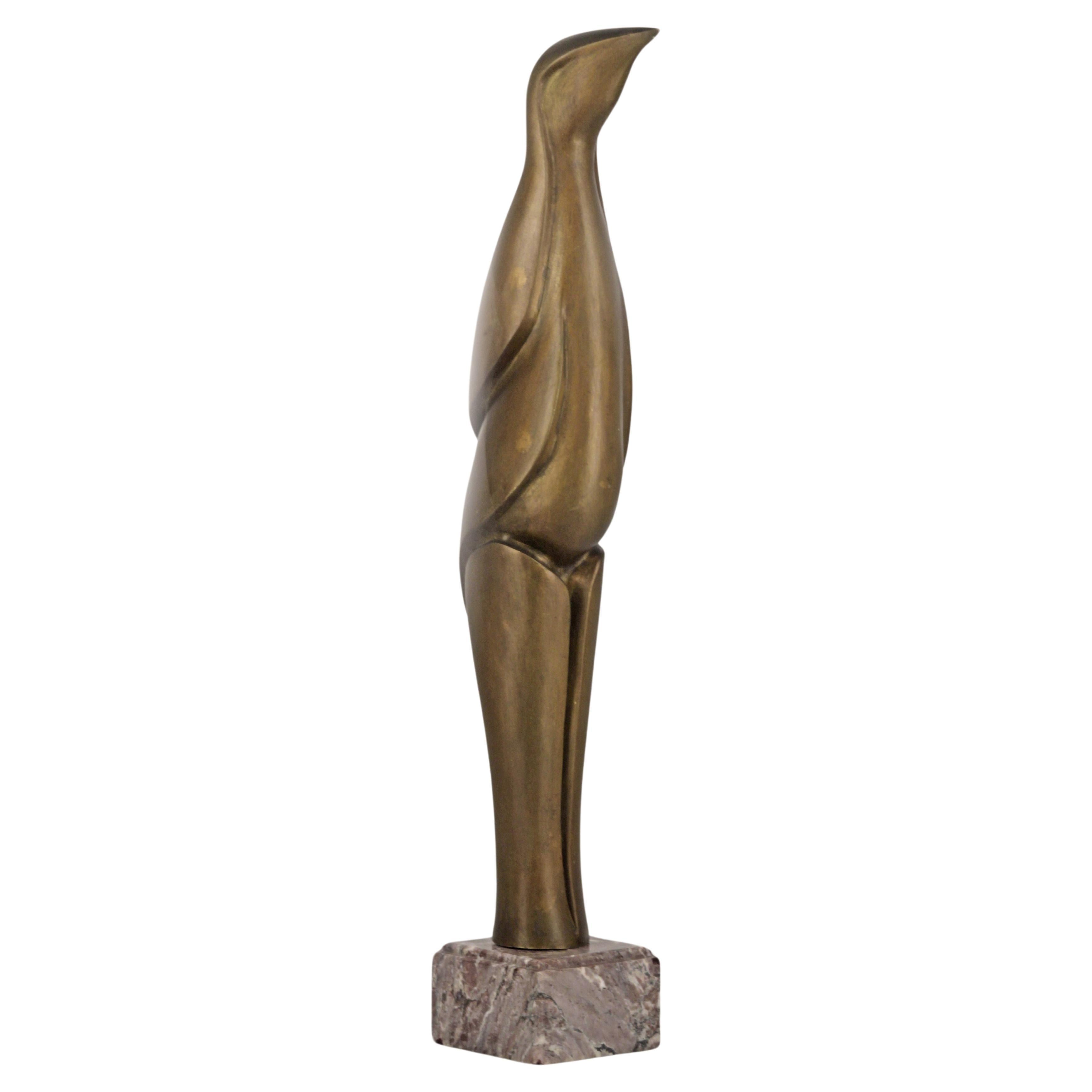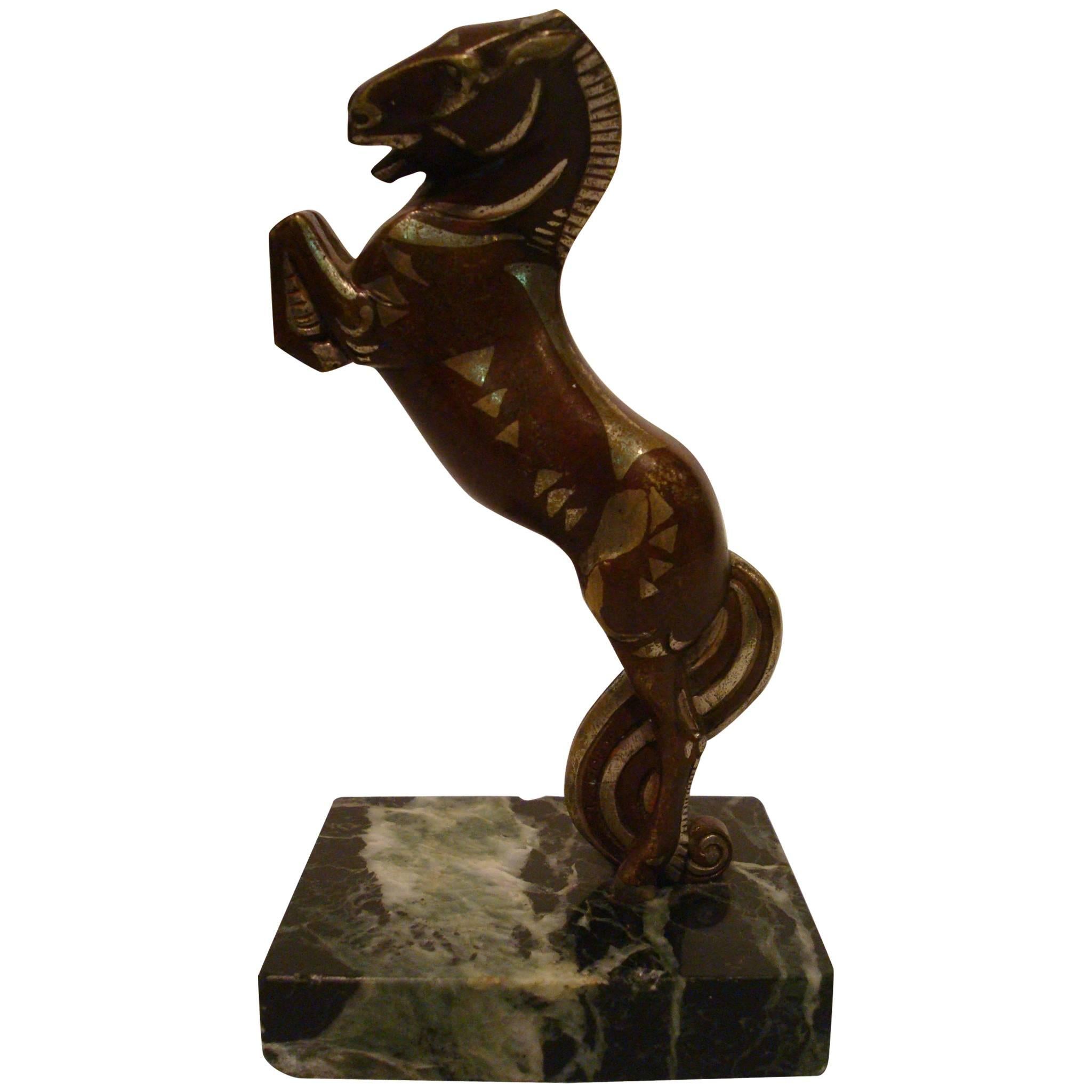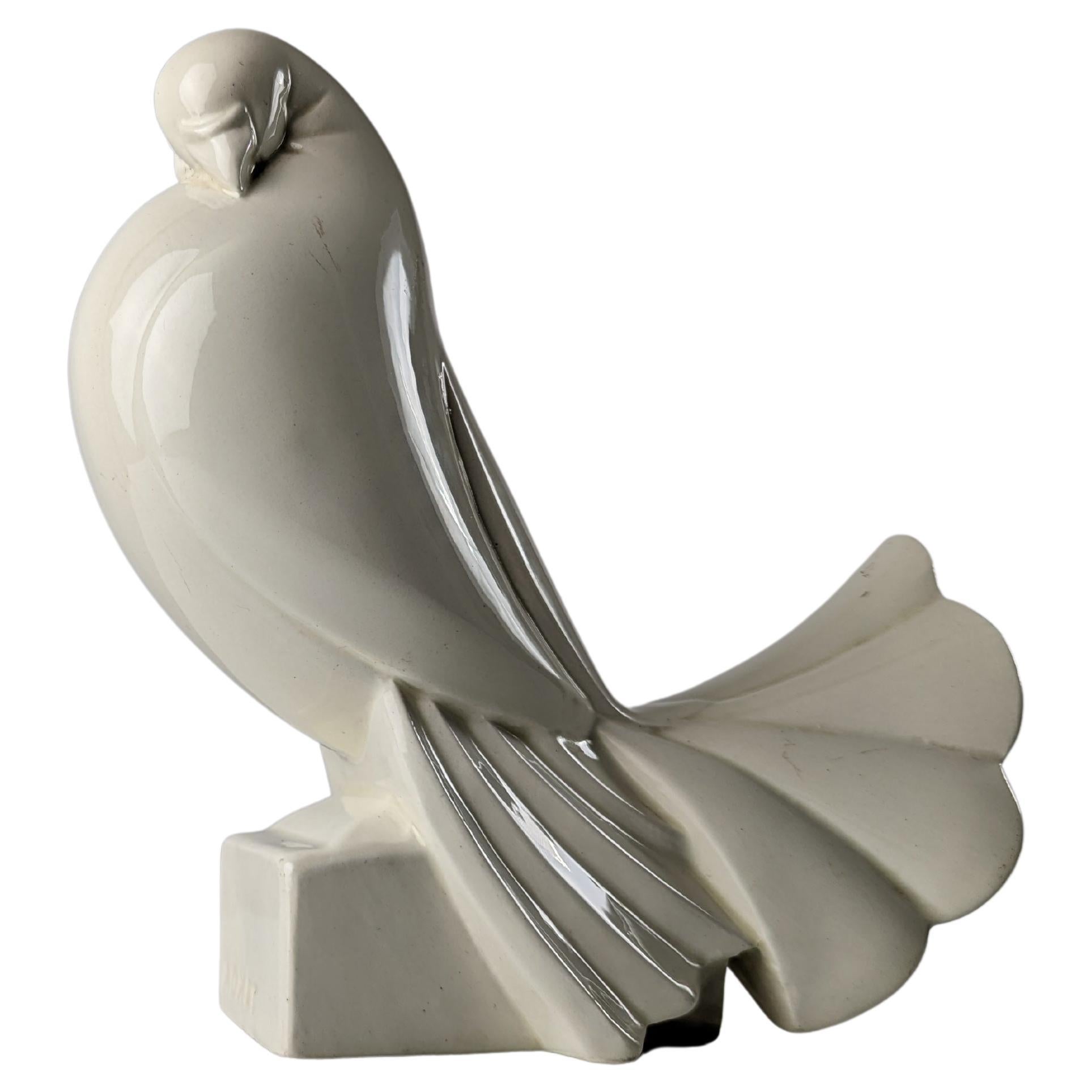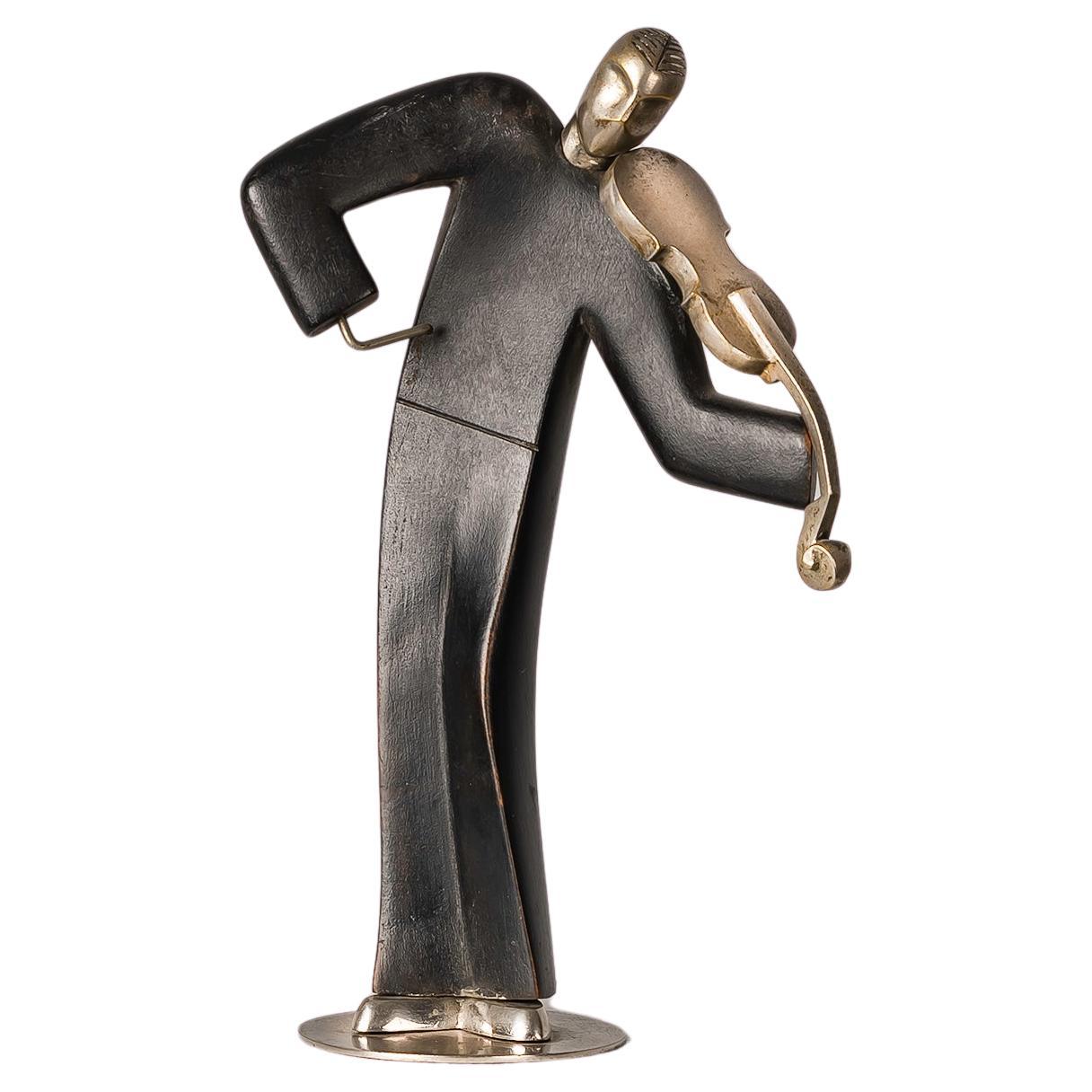Items Similar to Cubist Bronze Sculpture 'The Twins' by Willy Kessels, 1920s
Want more images or videos?
Request additional images or videos from the seller
1 of 11
Cubist Bronze Sculpture 'The Twins' by Willy Kessels, 1920s
About the Item
Cubist bronze sculpture 'The Twins' by Willy Kessels - 1920s
Cubist bronze 'the twins' from the 1920s famous and well known Belgian sculptor, architect and photographer Willy Kessels. Especially as a photographer Willy Kessels is considered one of the most important representatives of modernist photography in Belgium, based on his work from the period 1929-1940.
This bronze is made in a small edition, up to 10 copies. The bronze is cast in Brussels and on the inside there is a mark. The signature is at the foot of the sculpture; 'W. Kessels, Sculpt. Bruxelles'.
Biography: Willy Kessels (Dendermonde, 1898-1974) studied architecture in 1916 in Sint-Lucas and sculpture at the Academy of fine arts in Ghent and starts in 1919 to work as an architect and designer in Brussels under the auspices of the architect Georges Hobbé. There he photographs all works and there his love for photography is growing. In 1926 he begins to focus on the photography and is also exhibiting, with other artists like Baugniet, Victor Bourgeois and Henri van de Velde.
In 1925 his work was already on display at the Exposition Internationale des Arts Décoratifs et Industriels Modernes in Paris.
His designs for applied art, furniture, statues and photos are receiving more and more attention and are greatly appreciated. However, he decided in 1930 to focus only on photography. In 1932 and 1933 he exhibited along with other photographers as Germaine Krull, André Kertesz, Laszlo Mhly-Nagy and Man Ray on the Exposition Internationale de la photographie et du film at the Palais des Beaux-Arts in Brussels.
He's also working as a photographer to the film Misere au Borinage from 1933 by Joris Ivens and Henri Storck.
Unfortunately, he became in 1935, by his friendship with Joris van Severen, in contact with the Belgian National Socialism. He also left Modernism in that period. He made neo-romantic pictures of the Flemish landscape and photographs he photagraphed later on the Belgian leaders of the collaboration. In later life he experiments again with an innovative modernist style.
- Dimensions:Height: 8.67 in (22 cm)Width: 4.34 in (11 cm)Depth: 3.15 in (8 cm)
- Style:Art Deco (Of the Period)
- Materials and Techniques:
- Place of Origin:
- Period:
- Date of Manufacture:1920
- Condition:Wear consistent with age and use.
- Seller Location:Brussels, BE
- Reference Number:1stDibs: LU2265331021012
About the Seller
4.8
Platinum Seller
These expertly vetted sellers are 1stDibs' most experienced sellers and are rated highest by our customers.
1stDibs seller since 2016
621 sales on 1stDibs
Typical response time: <1 hour
- ShippingRetrieving quote...Ships From: Brussels, Belgium
- Return PolicyA return for this item may be initiated within 7 days of delivery.
More From This SellerView All
- Contemporary Bronze Sculpture by Boschetti, ItalyBy Benedetto BoschettiLocated in Brussels, BEContemporary bronze sculpture by Boschetti, Italy.Category
21st Century and Contemporary Italian Abstract Sculptures
MaterialsBronze
- Art Deco Bronze Sculpture by Jean Ortis " NU FEMININ ACCROUPI" , 1930sLocated in Brussels, BEArt Deco Bronze Sculpture by Jean Ortis " NU FEMININ ACCROUPI" Statue en bronze à patine brune représentant une femme nue accroupie. Signée "J. Ortis", avec le cachet du fondeur, "S...Category
Vintage 1930s Art Deco Figurative Sculptures
MaterialsBronze
- Mid-Century Modern Bronze SculptureLocated in Brussels, BEMid-Century Modern Bronze SculptureCategory
20th Century Figurative Sculptures
MaterialsBronze
- Bronze Sculpture " Cowboy on his horse" by Paul Sersté, BelgiumBy Paul SersteLocated in Brussels, BEBronze Sculpture " Cowboy on his horse" by Paul Sersté, BelgiumCategory
20th Century Belgian Figurative Sculptures
MaterialsBronze
- Rhinoceros Sculpture by Antonio Amorgasti, Bronze Signed and Dated, 1928By Antonio Amorgasti 1Located in Brussels, BERhinoceros Sculpture by Antonio Amorgasti, Bronze Signed and Dated, 1928Category
Vintage 1920s Animal Sculptures
MaterialsBronze
- Mid-Century Bronze Modernist Sculpture, 1950sLocated in Brussels, BEMid-Century Bronze Modernist Sculpture, 1950sCategory
Vintage 1950s Abstract Sculptures
MaterialsBronze
You May Also Like
- "African Drummer, " Fabulous Cubist Bronze Sculpture, France, 1920sLocated in Philadelphia, PAA brilliant example of early French cubist sculpture, this depiction of an African drummer, her hands beating the two-sided drum and her head looking up as she sings or chants to the music, illustrates the fractured, reinvented reality that Picasso and Braque invented just ten or twenty years before. The abstracted breasts of the figure bring to mind the mature Cubism of Ossip Zadkine, Jean Souverbie...Category
Vintage 1920s French Art Deco Figurative Sculptures
MaterialsBronze
- Art Deco, Cubist Lying Women Sculpture by Pablo Curatella Manes, 1920sBy Pablo Curatella ManesLocated in Buenos Aires, OlivosArt Deco, Cubist figure of a lying lady. Called by the Artist The Lying Nymph. Made between 1921-1926. Terracotta over a black wooden base. Bio: Pablo Curatella Manes (December 14, 1891–November 14, 1962) was a prolific Argentine sculptor. Born in La Plata in 1891 to Clara Manes, a Greek Argentine immigrant, and Antonio Curatella, from Italy, Curatella Manes first acquired an interest in sculpture during his frequent childhood visits to the newly inaugurated La Plata Fine Arts Museum. He entered the labor force in 1905, as a typographer in a printing house, though an accident some months later ended his career in that industry. Drawing on his childhood interest, he was taught the basics of sculpture by Arturo Dresco, who owned a local atelier. The Curatellas relocated to Buenos Aires, where the young sculptor enrolled in the National Fine Arts School in 1907. A rebellious streak promptly led to his expulsion, though Curatella earned an apprenticeship in 1908, under Lucio Correa Morales, with whom he worked on a number of works commissioned by Public Parks Director Charles Thays. Following the 1910 elections, he created a commemorative gold medal for Vice President-elect Victorino de la Plaza, who secured a scholarship for Curatella that took him to Florence and Rome. Curatella traveled extensively in Italy, as well as much of Western Europe, touring the region's museums and cathedrals. On his return to Argentina in 1912, National Fine Arts School director Ernesto de la Cárcova nearly ordered the funds' repayment, objecting to travel and activities not covered by the scholarship, desisting from the punishment after being shown a folio of Curatella's prolific work. His first Buenos Aires exhibit, in 1912, was followed by a return to Europe. He settled in the Montparnasse section of Paris and studied under Aristide Maillol and Emile-Antoine Bourdelle, but was forced to return home after the outbreak of World War I. In his native La Plata he opened an art gallery, the Salón de Otoño (Autumn Salon), in 1916. A brief return in 1917 to Paris, where Curatella worked under Maillol, Maurice Denis and Paul Sérusier, was eventually followed by a second scholarship, with which he settled in Paris in 1920. Studying under Henri Laurens, Juan Gris, Constantin Brâncu?i and Le Corbusier, Curatella explored Cubism, and his sculptures became more avant-garde; he also established his first atelier, where he acquired the habit of creating and destroying sculptures in a single day. He married French painter Germaine Derbecqre in 1922 and in 1926, was given a post in the Argentine Embassy. Returning to Argentina in 1929, he exhibited Las Tres Gracias...Category
Early 20th Century Argentine Art Deco Figurative Sculptures
MaterialsTerracotta
- Bronze cubist sculptureBy Jan and Joel MartelLocated in Buenos Aires, ArgentinaBronze cubist sculpture Penguin Motif Art deco style Circa 1940 Origin France No signature. Attributed to J.Martel Piece rat. Has some wear It has a small dent on its beak. marble ...Category
Vintage 1940s French Art Deco Animal Sculptures
MaterialsBronze
- Art Deco, Cubist Becquerel Bronze Polo Horse with Original Patina, 1920sBy André Vincent Becquerel, Etling ParisLocated in Buenos Aires, OlivosFantastic polo or equestrian paperweight, car mascot, hood ornament, by French artist Becquerel. Signed. With foundry marks. With original Art Deco patina. Mounted over a marble base.Category
Vintage 1920s French Art Deco Paperweights
MaterialsMarble, Bronze
- Pigeon Sculpture by Jacques Adnet 1920sBy Jacques AdnetLocated in Benalmadena, ESExtraordinary ceramic dove by the renowned French artist and designer Jacques Adnet and exhibited for the first time at the 1925 International Exhibition of Decorative Arts and Modern Industries in Paris, specifically in the ladies' room of La Maitrise. This historic piece captures the essence of the Art Deco style of the period and represents a true gem for collectors and design lovers. The Adnet Ceramic Dove is a masterpiece of craftsmanship and detail. Each graceful curve and flowing contour reflects the influence of geometry and the modern aesthetic of the time. The delicacy and precision with which this piece has been sculpted make it a testament to Adnet's talent and artistic vision. The carefully worked ceramic presents a combination of subtle glazes, creating an effect of depth and texture. This Adnet Dove...Category
Vintage 1920s French Art Deco Animal Sculptures
MaterialsCeramic
- Franz Hagenauer, Violinist Sculpture, 1920s, Silvered Bronze & WoodBy Werkstätte Hagenauer WienLocated in BARCELONA, ESStep into the enchanting world of the 1920s with Franz Hagenauer's Violinist Sculpture—a symphony of artistic brilliance. Crafted from silvered bronze and wood, this masterpiece embo...Category
Vintage 1920s Austrian Art Deco Figurative Sculptures
MaterialsBronze
Recently Viewed
View AllMore Ways To Browse
The Twins
Belgian 1920s
1920s Deco Sculptures
Sculpture Paris 1925
Belgian Modernist Furniture
Foot Sculpture Bronze
Twins Photo
Small Cubist
1920s Modern Period Furniture
1920s Modernist Furniture
Modernism Decorative Objects
Small Art Deco Sculptures
Modern Bronze Statues
Bronze Sculpture Andre
Small Bronze Statues
Modernist Abstract Bronze Sculpture
Neo Deco
Sculpture Art Deco Man
